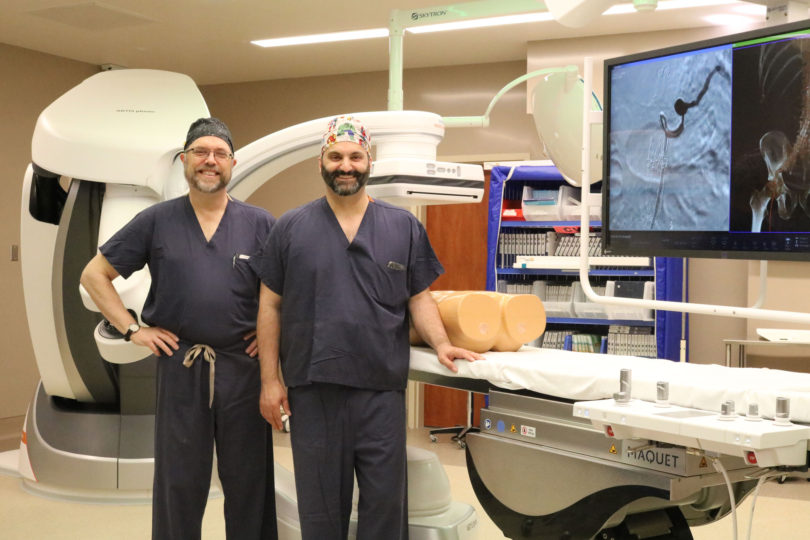A new operating room at Riverside Regional Medical Center not only represents the latest in cutting edge medical technology, but also means the Newport News, Va., hospital can offer more to its patients.
The new OR is uniquely designed as a hybrid, meaning that doctors can seamlessly switch between specialties — vascular to cardiac — during a single procedure without having to leave the room. Basically, doctors travel to the patient and not the other way around, which means increased efficiency and ultimately, better patient outcomes.
Designed for higher-risk vascular procedures, the room allows doctors to be able to operate right there if a minor case turns serious in a hurry, rather than having to move the patient to a separate operating room. Everything needed is right there, including new, state-of-the-art imaging equipment that allows surgeons to better visualize their field.
“This is top of the line,” says Dr. Joseph Piotrowski, a vascular surgeon at Riverside. “Before this, we couldn’t offer the same services the bigger centers do. Now we’re equivalent to them in every way.”
Many vascular procedures, such as cardiac catheterizations and balloon angioplasty, typically take place in a catheterization laboratory — usually referred to as a cath lab. A cath lab has diagnostic imaging equipment that doctors use to visualize the arteries and chambers of the heart before treating any abnormalities they find.
Sometimes, however, what starts as a routine cath lab case — minimally invasive procedures that involve a thin, hollow tube called a catheter being threaded through a vein that leads to the heart — turns serious. That’s when a patient has to be rushed to an OR for surgery. It can eat up precious time to make sure the OR is ready and all the necessary specialists are in place.
With the new hybrid OR, it can all be done in one place. If a vascular team has a patient who suddenly needs surgery, an anesthesiologist and cardiac team can swoop in. The room meets all the sterility standards of a traditional operating room.
Sometimes, vascular diagnosis is pretty complicated,” says Dr. Ernest Zichal, a vascular surgeon at Riverside. “There are cases where you don’t really know what you have until you start with an angiogram.”
An angiogram is a test that uses X-rays to look at blood vessels. It’s done by delivering dye through a catheter into the arteries, which makes them visible on the X-ray.
With the new, multi-million dollar imaging machine, doctors can take X-rays right in the OR without having to bring in an extra unit. The equipment features a huge, robotic arm that can move in multiple directions in order to capture images while a patient is lying on the table. The imaging machine is also tied into the mapping system used by the doctors to visualize the veins, arteries and heart on a television screen.
The way the X-rays are taken with the new machine — a pulsating vs. continuous beam — also means less radiation exposure for the doctors and the patients. So it’s safer. Additionally, the room features a new lighting system — some of the lights can be turned to green — which allows for a clearer, sharper image of the X-rays on the screen.
The hybrid OR took about a year to put together as a $9-million project for Riverside. It involved the transformation of a former equipment storage room and the purchase of the ARTIS Pheno imaging system. The room went into use in May.
It didn’t take long for the room to prove its worth. Shortly after the room went operational, Zichal said they had a case in which a patient’s splenetic artery ruptured during a procedure. If he hadn’t been in the hybrid OR, the patient would have to have been quickly moved and prepped for surgery.
He was bleeding to death at that time, essentially,” Zichal says. “We were able to keep working while they got anesthesia in and then do surgery.”
Riverside hopes that eventually, the hybrid OR can be used for even more advanced cardiac procedures.



